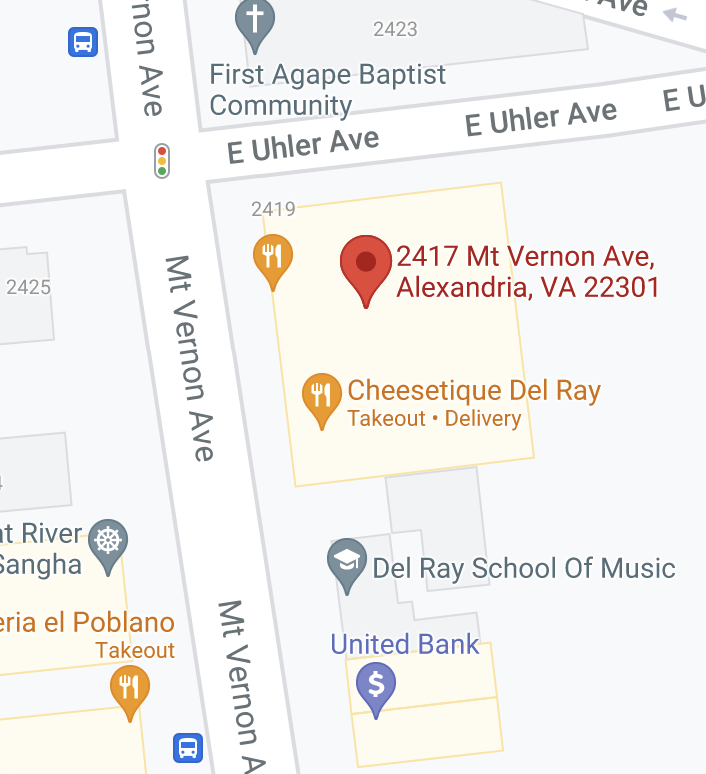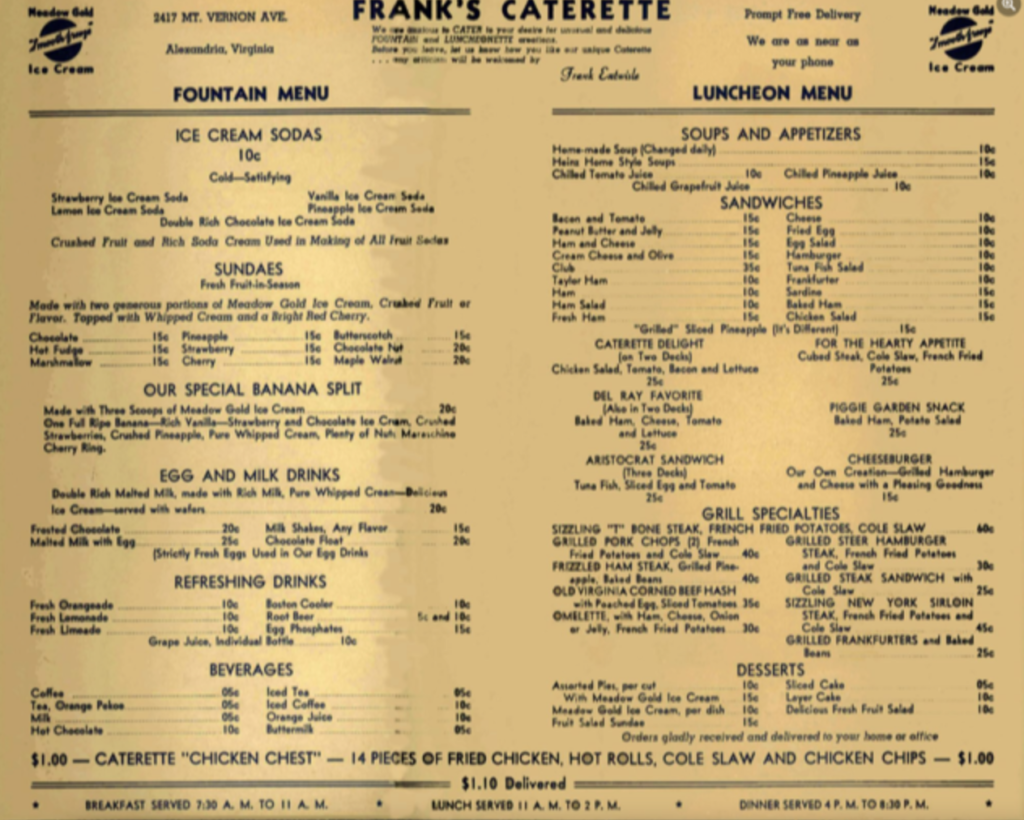If there’s one thing that always seems to be good for a chuckle, it’s looking back in the not-so-distant past at how inexpensive things used to be.
The menu at the beginning of this piece was from a diner-type restaurant in Alexandria, Va., in 1938, 11 years before I was born. If the prices seem incredibly low to the point of being difficult to believe, please remember that America was still coming out of the Great Depression in 1938. In fact, there was a dip back toward recession that year.
The most expensive meal on the menu was a sirloin steak dinner — for $.60.
Yes, thats 60 cents.
There was a “Chicken Chest” for $1 ($1.10 delivered), but that was 14 pieces of chicken, hot rolls, cole slaw and something called chicken chips, but that was obviously a family meal.
It’s not like prices got huge all that quickly. In 1960, when McDonald’s opened its first outlet in Dayton, Ohio, the ad was “47 cents for a three-course meal.” The “courses” were a hamburger ($.15), french fries ($.12) and a milkshake ($.20). In 1970, The Colonel’s chicken was $3.95 for a 15-piece bucket or $5.25 for a 21-piece barrel.
But there are other things on the 1938 menu that are even more fascinating. Just 20 cents for a banana split, for one thing. A dime for an ice cream soda or a hamburger.
There are a wide variety of beverages on the menu, but none of them were Coca Cola or Pepsi.
One fascinating thing about 1938 was that it was the first year there was a federal minimum wage. It was part of the New Deal, and it mandate that employers pay their workers $.25 an hour. That’s a crisp new $10 bill for a 40-hour work week.
Of course, work weeks were longer than 40 hours then. One fairly popular standard was 55 hours — 10 hours each one weekdays and a half day on Saturday. That’s $13.75 a week.
Happy days were not quite here again.
If we compare then to now, one of the things we see that we probably already know is that wages and prices ascend at very different rates. A minimum wage of $.25 back then would translate to $4.45 now, but try finding a banana split for $3.40. Most places you would pay twice that much for less banana split.
Part of it is supply and demand. In 1938, the U.S. population was about 129,800,000. We’re more than 2 1/2 times that big now, and we’re not in the Great Depression, so there are a lot more dollars chasing products.
Of course, there are a lot more dollars in general. In 1938 it was a much bigger deal to be a millionaire and nearly impossible to be a billionaire. Now there are 18,600,000 millionaires in the U.S., and 614 billionaires.
Even worse, the top three billionaires in the U.S. had a combined worth of $23.8 billion (adjusted for inflation) in 1990. As of today, the top three (different people than 1990) have a combined worth of $279 billion. There is no possible way that’s healthy.
In 1938, if you lived in a small town or small city, the odds were very good that the richest person in town owned a local business and employed local people. For the most part, they were judged by how they treated their employees.
These days if you work at a company like Walmart, the odds are very slim that you’ve ever met the people who own the company and almost as slim that they have ever set foot in your store.
The world got too big.

I wish we could sit at a table in Frank’s Caterette and discuss it over a banana split, but it’s no longer there. In fact, two other restaurants are in the spot where Frank did business. Piece Out Del Ray is an Italian restaurant at 2419 and Cheesetique Del Ray is just south of it.
Bet neither one of them sells banana splits.

